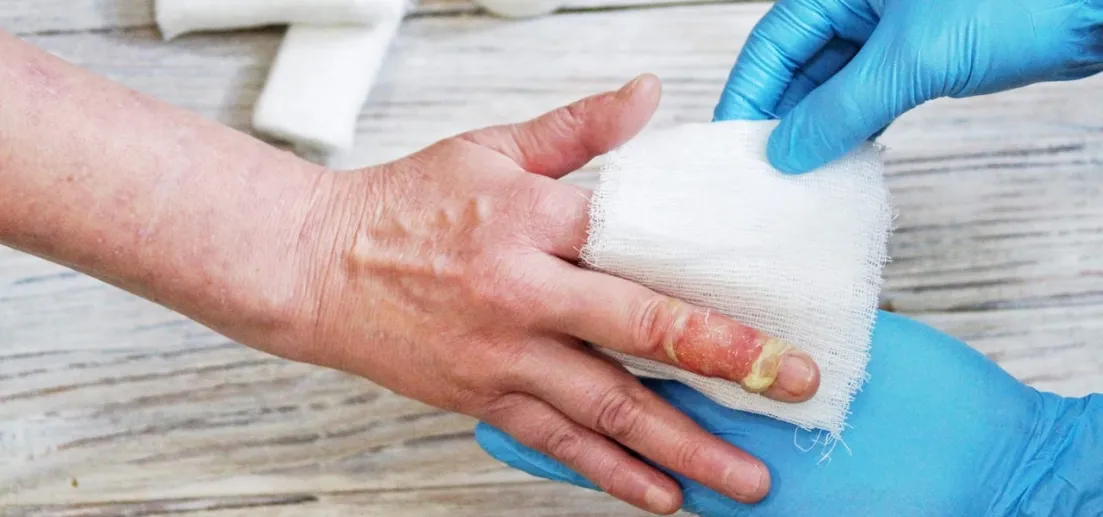The skin is the body’s largest organ, acting as the body’s first line of defense against temperatures, sunlight and UV rays, harmful chemicals, abrasions, and a number of other important functions that keep us safe and healthy. Damage to the skin introduces the possibility of additional complications such as infection, decreased mobility, pain sensitivity or loss of sensation, and more. Burns pose a major risk to the skin, as they cause significant damage to a wide area of the skin in a short period of time, and recovering from these types of injuries are extremely complicated and involved—if possible at all.
If you or a loved one has suffered a burn injury that was the result of someone else’s actions (or inactions), contact a Florida catastrophic injury lawyer from Fasig | Brooks as soon as possible to learn more about how we can support you through the complicated process of seeking compensation that you rightfully deserve. After any type of serious injury, trying to additionally handle legal matters can be extremely overwhelming, and the insurance company will take advantage of your compromised condition by trying to convince you to accept a much lower settlement than you deserve – and that you need in order to move forward with your life without suffering the financial consequences of someone else’s negligence or recklessness.

Common Types of Burn Injuries
The following is a high-level explanation of common burn types. Whether or not your burn injuries are exactly represented below, contact our Florida personal injury lawyers now so that we can discuss the circumstances leading up to your injury in order to understand how we can help you seek compensation for this terrible injury.
Start Your Free Case Evaluation
Flame Burn Injuries
When people think about burn injuries, it is likely that this is one of the first that they think of. Burn injuries resulting from direct contact with open flame are very common, and depending on the intensity of the flame, the size of the fire, and the amount of contact with the body, can range from minor blistering or redness to complete charring of the skin, muscles, and even bone.
Start Your Free Case Evaluation
Scalding Burn Injuries
This type of burn injury results from exposure to high-temperature liquids or steam, such as a burst steam pipe, boiling water, or other hot surfaces where there is no open flame.
Start Your Free Case Evaluation
Chemical Burn Injuries
Exposure to caustic chemicals can cause serious and permanent damage to the skin, and while there is no open flame, chemicals can cause the same type of lasting injury as a flame burn or a scald burn.
Radiation Burn Injuries
A radiation burn can result from exposure to any number of radiation sources, including x-ray and radiation machines, as well as natural UV light from the sun – all of which lead to burnt skin.
Degrees of Burn Injuries
Burns come in varying degrees, from minor irritated areas on the skin to permanent damage to the body going beyond the skin.
First-Degree Burns
A first-degree burn is the least severe burn and causes no permanent damage and little more than mild discomfort in most situations. These types of burns typically do not leave a scar, and only have minor redness and itchy irritation that clears itself up within a week or two.
Second-Degree Burns
A second-degree burn is more severe than a first-degree burn and is characterized by pain, swelling, redness, and sometimes blistering. These types of burns require some additional care when compared to first-degree burns but often leave no scarring as long as they are properly cared for.
Third-Degree Burns
A third-degree burn is a serious injury that can cause permanent damage even when treated properly. This type of burn goes beyond the top two layers of the skin—known as the epidermis and dermis—and causes damage or destruction to tissues beyond the skin itself. Depending on the source of the burn and a number of other factors, a third-degree burn can appear white, may look like the skin is charred, or could be a deep red color. These burns leave scars and often require skin grafting to facilitate a full recovery.
Fourth-Degree Burns
A fourth-degree burn is the most serious of all and is characterized by a complete charring of the skin, deeper tissues, muscles, fat, and even bone. With this serious of a burn, the best option may be complete removal of the affected area if possible.
We know what needs to be done to facilitate a fair settlement




